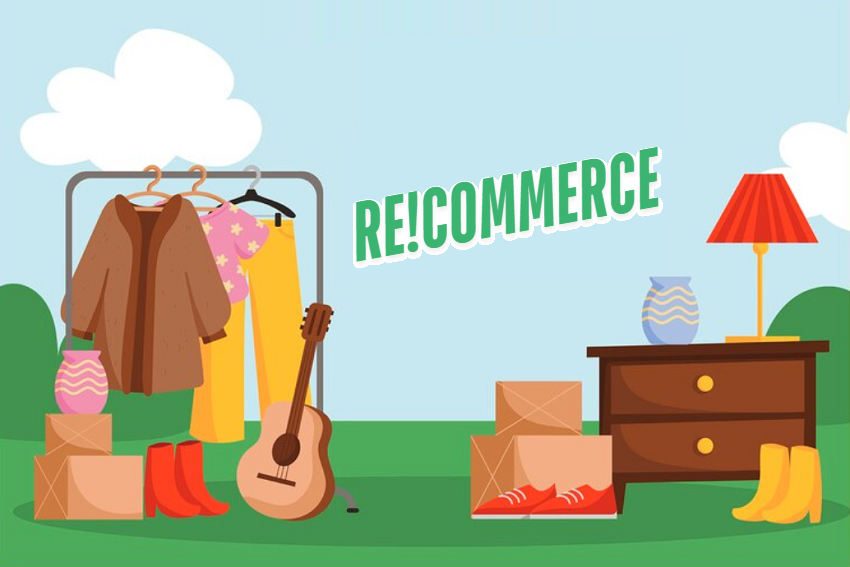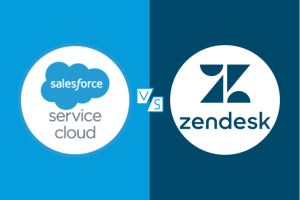The emergence of recommerce is the new emerging trend which is expected to take over the global market and change the shopping behaviors, retail management techniques, as well as the preservation of the environment. The new trend that can be qualified as the act of buying and reselling used products has become a revolutionary approach that links economic profits and environmental concern.
This article underlines the features of recommerce, history of its development, its present state, the opportunities and the threats of its realizations, and the potentialities of its further evolution. Thus, those of consumers up to the policy maker level should be able to tailor this dynamics for the creation of a sustainable future with realistic economic reasons.
What is Recommerce?

Recommerce is a re-interpretation of the traditional processes such as outsourcing, flea markets, garage sales and second-hand markets. But it has also expanded its operation with the influence of digital world and become a strong industry. The idea of recommerce is thought to have started in the late 1990s up to early 2000 by online sales operating on the peer-to-peer sale model. Sites such as eBay and Craigslist created a platform for purchase and sale of used items regardless of geographical location thus the foundation was created.
With the rise of e-commerce, the concept of the lifecycle of products in relation to the environment and consumerism came into focus. Thus, interest in recycling and reusing products grew rapidly, resulting in the realization that e-waste was increasing. At this point, awareness converged with technological advancement, and this led to the birth of specialized recommerce platforms for particular product segments such as fashion, electronics, automobiles, and industrial products.
The Evolution of Recommerce
Early Beginnings
In fact, the concept significance of recommerce is not strange to the channel. Throughout the centuries people have bartered or sold their pre-owned items including fruits by farmers from makeshift or flea markets. However, due to technological advancement in current society, this practice has moved from being a small-scale business to a large-scale business.
In Appendix A you identify that the beginning of recommerce can be attributed to the evolution of eBay and the concept of Craigslist as an online marketplace closer to the early 2000s. These platforms leveled the playing ground by adopting the resale markets to reach clients through the internet hence selling to any individual. Thus, it could be concluded that this was the start of digital recommerce that would prompt the development of more complex scenarios.
The Rise of Specialized Platforms
Advanced with technology and enhancement in the consumers’ awareness, tender specialized recommerce were created. These did not just present the selling platform alone; they were an experience, assured geographical correlation and channel convenient organization. This was evident through other organizations such as ThredUp in fashion, Gazelle in electronics, and Poshmark especially in personal apparels.
Since the emergence of social media and mobile technology the recommerce has elevated in an unknown way. With the help of various features and applications such as Instagram and Facebook Marketplace, recommerce became seamlessly integrated into people’s lives. Smartphone apps brought convenience in the purchase and selling of items that helped the consumers to buy the items online easily.
Sustainability and the Green Movement
New sustainable thinking: due to the growing concern for eco-unfriendly activities, the appearance of a more sustainable vision in the 2010s was clearly seen. Recommerce emerged as a practice advantageous to slow fashion and disposable culture in clothing and electronics. Consumers became conscious about their spending and their attitudes towards buying second-hand products shifted towards more environmentally friendly approaches, as recommerce platforms offered themselves as solution for sustainable consumption and consumption of goods.
Due to the existence of the global economic crisis and the increasing concern over the environment, customers sought recommerce as a cheaper solution with a focus on sustainability. This is why this period marked the beginning of the recommerce’s strength and the continued growth of sales to compete with upstarts.
The Current Landscape of Recommerce
Today the revamping industry is estimated to be a multibillion-dollar industry boasting of all sizes, from small scale companies to department stores. There are other categories in the industry and each of them has a specific circumstance.
- Fashion Recommerce: There are ventures such as ThredUp, Vestiaire Collective, Poshmark, and others that have disrupted the fashion ecosystem making a marketplace where buyers can purchase and whole sellers can sell fashion products which are second-hand and often second-life fashion. This segment even if coves fashion lovers who like to trend in different looks from what is in the market also embraces the issue of fast fashion.
- Electronics Recommerce: Others limited themselves to the selling of refurbished and second-hand gadgets and devices; they include Gazelle, Back Market, and Decluttr. This segment is hinged on the fact that electronic gadgets have a short life span and the issue on e-waste.
- Auto Trading: CarMax and Shiftfocus among others are online market places that deal in used cars. This segment is favored by substantial depreciation of cars and people’s need for cheap transport.
- Industrial Goods Recommerce: Tradus and DomaVi are bringing more attention to employing recommerce in selling heavy industrial goods such as machinery equipment and tools. This segment holds great importance for the industries which are interested in cutting their capital expenses and want to optimize the working life of the assets.
How Recommerce Works
The Recommerce Ecosystem
Recommerce participates in different actors such as customers, marketplaces, brands, and delivery companies. It is essential to know about it to understand the process of recommerce.
- Customers: The two main subjects of recommerce are people who sell or purchase second-hand products. Sellers may be people clearing out their homes, apartments or just in need of some extra cash in their pockets for the products while buyers search for affordable, rare, and eco-friendly items.
- Markets: Recommerce markets involve the selling of products between buyers and sellers through various platforms. These include the open-classified sites popular for selling and buying an array of goods and services such as eBay, Facebook Marketplace and others that specialize in certain genres of products. They offer structures, protection, and reliability, which make the transactions to be very efficient.
- Brands and retailers: Many brands and retailers are turning into recommerce either by launching their own platforms or joining the existing ones. It lets them regulate the resale of their products, quality assurance, and several touchpoints with the clients.
- Logistics Providers: Proper logistics are crucial in the industry as it involves the recycling of used goods. Providers directly accept, inspect, repair, or renovate if needed, and deliver goods. Automation and the application of Artificial Intelligence in the further description of logistics tasks increase effectiveness and adaptability.
The Process of Recommerce
That said, the general steps that define the recommerce process are as follows:
- Collection: Products are also pulled from sellers by arranging for the collection of the products through delivery vans or the seller’s own transport. Cash rewards are given to most participants while some are Giving participants free credit to their stores as an incentive.
- Sorting & Grading: After that, items are examined to determine their quality and grade. Sometimes to facilitate the sorting process, there are set graduations that are employed depending on the item, such as ‘like new,’ ‘good,’ and ‘acceptable.’ This transparency contributes to the buyer-seller relationship since the buyers believe that they are getting genuine products from the sellers.
- Refurbishment: If there is a need to make the desired appearance and functionality, refurbishment is done on the items. This step is essential especially for electronic and other durable products to ensure that they are in good condition before offering them on the market.
- Selling Process: All inspected and refurnished items are published on the site along with the description, photo, and grading of the item. There are two choices; sellers can decide on the price that they want to be charged or let the platform put bids on the items.
- Delivery: The products offered are dispatched to buyers once the process is completed. Perhaps, it is a well-acknowledged fact that proper stock management and timely transportation of goods greatly influence customer satisfaction.
- Returns and Customer Service: Many retail platforms for returned clothing products provide strategies such as return policies and customer services should arise for consumers to build trust and confidence with the brands.
The Role of Technology
Technology should therefore be central to the recommerce ecosystem as it forms the general enabler of the business. Several aspects of recommerce, which include planning, supply chains, algorithms, intelligence, and learning have been improved by the application of advanced technologies.
- Data Analytics: It provides consumer pattern understanding and analyzes for pricing and recommendation.
- Artificial Intelligence and Machine Learning: These technologies enable better grading, efficient and effective management of processes of delivery to customers as well as through implementation of chatbots and artificial intelligence virtual assistants.
- Blockchain: There is new information on platforms using blockchain to specify the product’s origin and guarantee the purchase and sale.
Benefits of Recommerce
According to Recommerce defined above, there are many advantages associated with it in terms of economic, environmental, and social impact.
Reducing Waste and Landfill Impact
Perhaps the most attractive aspect of recommerce is that the concept has the benefit of helping to eliminate waste. Due to the increased uptake in the use of recommerce, many products are being recycled leading to the reduction of millions of pieces going to the landfill annually. It also reduces the amount of waste that have to be treated, which in turn helps to reduce pollution in the form of emissions into the atmosphere or polluting the soil.
Conserving Resources
From this, you will agree that recommerce also assists in the preservation of resources since there will be lesser calls for new raw materials used when producing new products. When using second-hand products, they do not have to go through the whole process of manufacturing which of course involves the cutting down of trees, consuming water as well as destroying natural habitats. This concept is in line with circular economy where resources are utilized and retained in the economy for as long as is feasible.
Cost Savings for Consumers
To consumers, recommerce poses a cost-effective way of acquiring new products on the market. They are cheaper than new products since their prices are usually much lower than those of various new products, thus giving consumers the opportunity to enjoy superior quality products at lower prices. This is especially helpful in the economic situation where any kind of frugal, cheap, or inexpensive shopping is highly recommended.
Stimulating Economic Activity
The idea of recursive consumption helps in generating new economic value through the commerce of second-hand products. It provides work opportunities to people in the conventional retail sector apart from generating new employment opportunities in the fields of electronic commerce, transportation, and other related services. Additionally, recommerce appears to suit small businesses and self-starters mostly those who target specific markets or regions making the economy more robust.
Extending Product Lifecycles
In a business perspective, recommerce is an effective way by which organizations can recover their products’ mid-cycle and even increase their longevity. Through resale or refurbishment of these goods, firms can therefore capture more value out of their products. Besides, it helps to create customer loyalty and satisfaction, which also impacts positively on the reduction of the costs of manufacturing and improvement of the profit margins in the long run.
Promoting Inclusivity and Access
A major social impact of recommerce is that it breaks the barriers of social inequality since more consumers can afford products than when they were directly sold in the market. This creates an opportunity for differentiation of products for the less fortunate to be able to purchase quality products that would be out of their reach. Furthermore, recommerce can contribute to social causes, primarily because organizations such as Goodwill and The Salvation Army sell products to needy individuals.
Encouraging Sustainable Consumption
Since recommerce advocates for used items to be bought and sold as easily as new ones, it contributes to a change in the way people consume products. It helps people come to understand how important an object is to have a long life and to avoid obsession with the idea of disposal that most societies have. This change of culture is important in establishing a better and sustainable world in the future.
Leveraging Digital Platforms
New trends have emerged due to the development of digital platforms which has boosted the recommerce industry. eBay, Poshmark, and its counterpart ThredUp have seen tremendous growth in consumption from customers who are interested in purchasing products that have been used before. It implies the ease of usage, secure means of payment process, and extensive coverage of the market that helps both buyers and sellers reduce the entry barriers.
Innovations in Product Refurbishment
Technological development has also impacted positively on the efficiency of refurbishment and repairing activities so as to meet the set standards of outright products. This area has promoted consumer confidence in recommerce since they are sure to acquire quality and long-lasting products.
Challenges in the Recommerce Industry
However, there are some challenges that have to be solutions for recommerce in order for this method to be fully utilized:
- Quality Control: Quality and Authenticity is a major issue arising while purchasing any second-hand production. Recommerce platforms also need to incorporate quality control and grading systems that should be highly credible.
- Logistics and Infrastructure: This affects companies because it becomes a base for transportation of products to their target markets and back to the restocking centers. The formation of secure supply chain network is not an easy task in terms of.
- Legal Issues: Every country has its own set of legal requirements concerning the sales of some products via the reselling method, especially in the electronics and medicine industry. It can be quite a challenge to operate in such settings given the following reasons.
- Customer Confidence: It puts much emphasis on the truth and trust that consumers place on recommerce programs. Misrepresentation and fraudulent incidences such as fake transactions or wrong labeling negatively affect the existing trust.
- Technological Adoption: With the current advancement in technologies such as blockchain, artificial intelligence and machine learning, we can find ways to make the recommerce process better. However, such technologies are capital intensive and need highly skilled personnel to manage and operate them.
The Future of Recommerce
It can be forecasted that the growth trends of recommerce will be promising due to the use of the latest technology and innovations, shifts in consumer behavior, and the rise in environmental awareness. Other factors that may manifest themselves in the future are as follows:
- Technological Innovation: The use of AI and machine learning in automation will help enhance the customers’ product recommendations as well as product quality evaluation, and check for fraud. Blockchain can be used to improve the supply chain management since its attributes can provide increased system credibility and clear record of transactions.
- Sustainability: With the acceptance of sustainability by consumers as well as other industries, recommerce will be a critical driver of sustainability.
- Clothes and Gadgets: These products are the most widely available on recommerce platforms right now though we see another type of items will become as significant as these two such as furniture, home goods, and collectibles.
- Market Expansion: Recommerce outlets will reach more countries, with strategized digital marketing or localized sales promotion to reach out to new markets.
- Joint Ventures & Associations: The joint venture between traditional retail stores and recommerce platforms makes it easier for the consumer to purchase both new and pre-owned products.
Conclusion
Concept of Recommerce is something that gives an overall shift in the traditional way of using and discarding the products. Thus, the recommerce business is not only offering economic value but also helping conserve the environment and supporting people’s welfare by implementing the idea of reuse. Being a dynamic rubbing industry, it can influence consumer habits, revitalize the strategy of retailers, and become a driving force for facilitating a sustainable future. And for stakeholders for all categories of the supply chain, it will be vital to comprehend and capitalize how the concept of recommerce will work.


